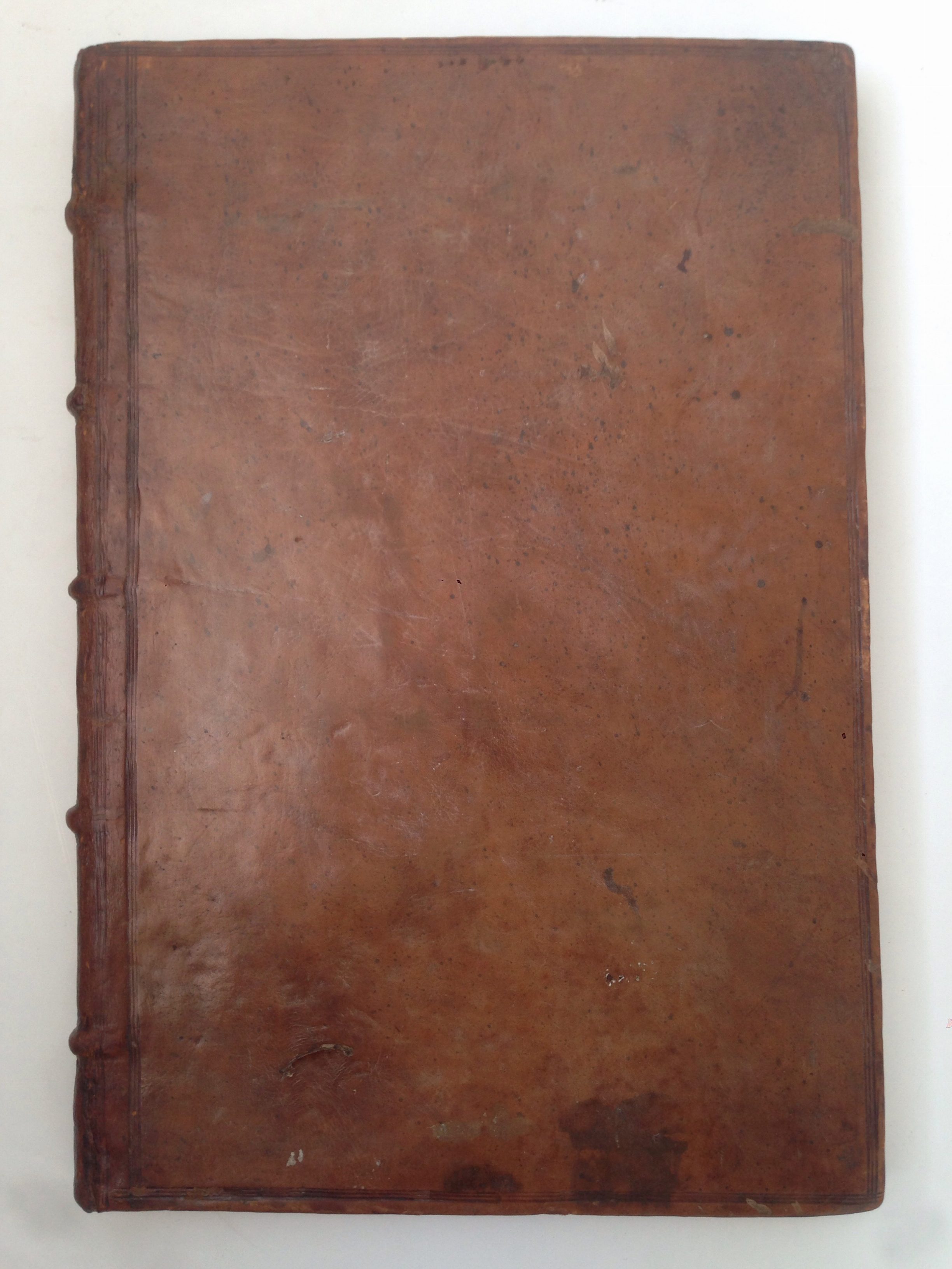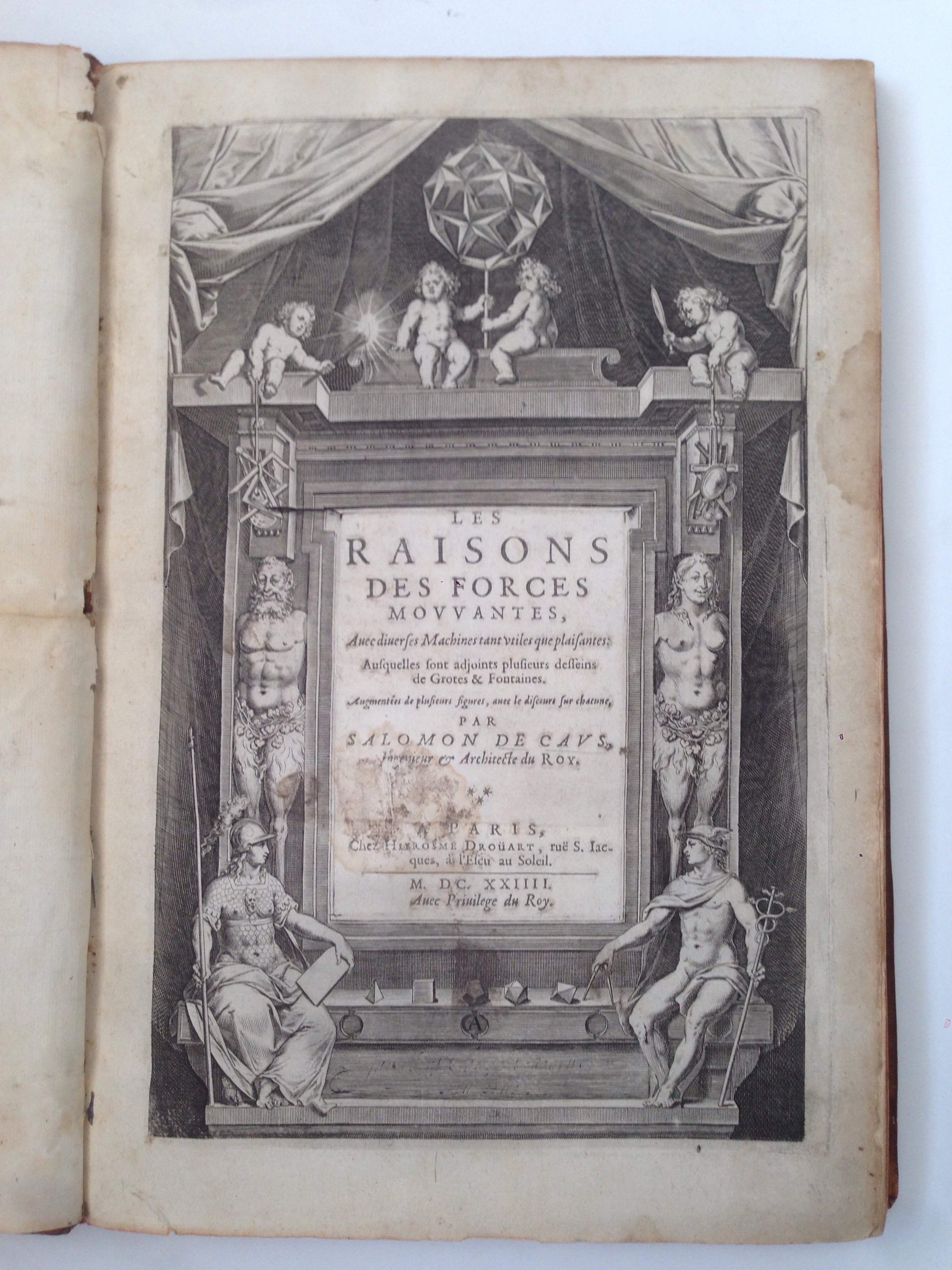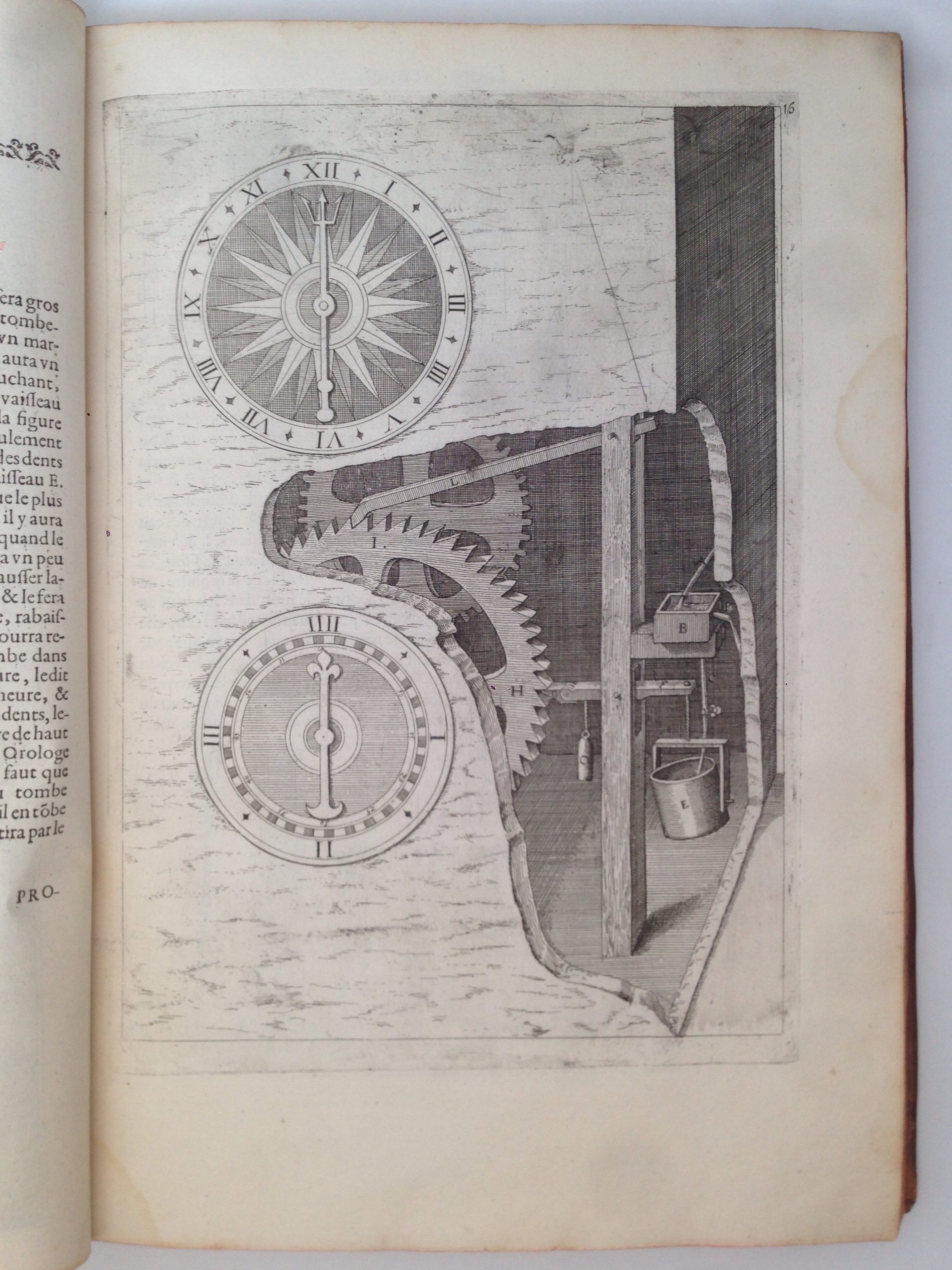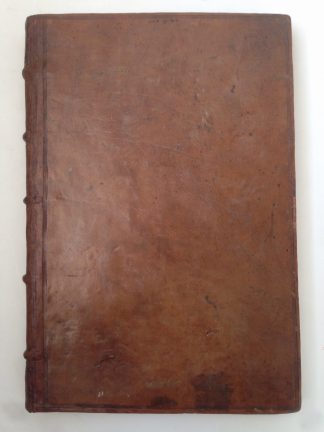CAUS, Salomon de
Les raisons des forces mouuantes, auec diuerses machines ... auquelles sont adjoints plusieurs desseins de grotes & fontaines
Paris, chez Hierosme Droüart, 1624£15,000.00
Folio. 3 parts in one. 1) ff. [iv], 46; 2) ff [ii], 28; 3) pp. 19, [iii], one large folding table. Title of first and second part within fine engraved architectural border, putti above holding a geometric figure and instruments, satyrs to the sides, Mercury and Minerva below, third part with letterpress title, sixty one full page and three half page engravings, five full page and twenty eight small woodcut diagrams, large woodcut folding plate, large floriated, grotesque and historiated woodcut initials, large grotesque head and tail pieces, typographical ornaments, engraved armorial bookplate of ‘Hopetoun’ on pastedown. Light age yellowing, slight soiling to printed section of first title, very occasional marginal mark or spot. A very good copy, crisp and clean, with very good impressions of the engravings, in handsome contemporary English calf, covers bordered with a triple blind rule, blind ruled raised bands, a.e.r. small expert repair at head and tail of spine.
Second edition, enlarged with extra plates, of this beautiful and extravagantly illustrated volume of ingenious hydraulic solutions to engineering problems produced by the Huguenot architect, inventor, garden designer and engineer, Salomon de Caus. The work deals with the physics of movement, with a range of technical applications, encompassing fields as diverse as energy, gardening and music. Book I describes the first machines to be operated by solar power, powered by sunlight striking closed air reservoirs, and one of the earliest uses of steam power. Scholars have proposed that De Caus as an early re-discoverer, or post-Classical inventor, of the principle of steam being used as a propelling force. He was deeply interested in garden design, mechanical fountains and speaking statues, and worked in the service of several great Renaissance princes. His masterpiece was the spectacular garden known as the ‘Hortus Palatinus’ at Frederick’s palace at Heidelberg. “He applied himself at an early age to the study of the mathematical sciences, his favourite writers being Archimedes, Euclid, and Vitruvius. After a visit to Italy he came to England as mathematical tutor to Henry, prince of Wales, and in 1612 published a work entitled ‘La Perspective avec la raison des ombres et Miroirs’; in the dedication of this work to that prince, dated at Richmond, 1 Oct. 1611, he states that he has been two or three years in the service of his royal highness. He seems also to have been employed as drawing-master to the Princess Elizabeth. After the death of the young Prince of Wales, De Caus was, in 1613, employed by the elector palatine, Frederick V, then recently married to the Princess Elizabeth, to lay out the gardens at the castle of Heidelberg…. While at Heidelberg De Caus published in 1615 ‘Institution Harmonique, ..’ In the dedication of this work to Anne, queen of Great Britain, dated 15 Sept. 1614, he says that his experiments in the mechanical powers of water were commenced while in the service of the late Prince of Wales. In the same year, 1615, he published his most important work, ‘Les Raisons des Forces Mouvantes avec diverses Machines.’ This work is divided into three parts, all copiously illustrated: I. ‘Les Théorèmes et Problèmes des Forces Mouvantes;’ II. ‘Des Grotes et Fontaines pour l’ornement des Maisons de Plaisance et Jardins;’ III. ‘De la Fabrique des Orgues.’ The second part contains, as he himself says in the dedication to Princess Elizabeth, many designs formerly made at Richmond for the adornment of the palace, or the entertainment of his master, the Prince of Wales. In the first part occur his enunciations of the theorems of the expansion and condensation of steam, and of the elevation of water by the application of heat, which have gained for him in some quarters the honour of being the first inventor of the steam engine, though De Caus seems only to have utilised them for fountains and other waterworks and claims no originality. It is almost certain that Edward Somerset, second marquis of Worcester, to whom this honour has also been ascribed, and later engineers, knew and developed the principles enunciated by De Caus.” DNB.
A very good copy in a handsome and well preserved contemporary English binding from the famous Hopetoun library, sold in 1889 by the 7th Earl of Hopetoun (see De Ricci, English Collectors, p. 164).
BM STC Fr. C17th p. 89 C508. BrunetI 1691. Berlin Cat. 1777 (1st edn)In stock








